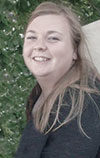Feeding calves is a serious business to me. It takes up a huge chunk of my day to get them fed, but the end results are worth the effort. When a healthy calf leaves her hutch to join her mates in the barn, I am satisfied with my work. In my eyes for our operation, if our calves haven't more than doubled their weight by weaning, I did something wrong.
I believe we can all agree that the start makes the difference with calves. Colostrum, vaccines and clean navels are stressed over and over again to dairy farmers, but what about after the start? Two years ago, we left behind milk replacer and purchased a pasteurizer. It gave us the option to utilize our excess of waste milk. After working through the kinks of some mechanical errors, we knew this was the best choice for our calves.
The only problem was that our calves were not meeting my expectation of at least doubling weight at weaning. They were receiving 2 gallons of whole milk a day, but it wasn't enough. After consulting with our vet, he convinced us to get a refractometer. Believe me, this was not easy for him to do. We had just invested in the pasteurizer. Why do we need to continue spending money to get this right?
It turns out he was completely correct with his assumption. Our calves’ nutritional requirements were not being met. Refractometers can be used to measure total solids in milk. Normal milk measures 12 to 13 on the refractometer scale; ours was about a constant 8. This meant that the fat and protein levels in our waste milk were not good enough to raise healthy calves. So we reluctantly purchased a few bags of milk replacer and began adding it to our batches of milk. It took some time to find the balance, but when we got it right, I knew almost immediately.
I continue to measure our milk every feeding with our refractometer and balance out our solids with milk replacer. We use about two bags a week. The great part about feeding waste milk is that it's free. The issue with feeding it is the inconsistency. Because most of our milk comes from mastitis cows, the components are constantly changing. Some days when there are more fresh cows in the batch, the milk will test at 12 and no replacer needs to be added, and that's why we check it.
Our calves are currently being weaned at seven weeks and almost everyone will have at least doubled her birth weight by then. There are so many different factors with feeding calves, things we can't control. By taking away the variables in our milk, I don't need to worry about calves falling behind. The whole experience required me to learn more about the makeup of milk, why it changes and how to test it. I probably should have paid better attention in science class, but I'm still learning as I go; I have to. I have to do what's best for the calves right now so they can have a bright future ahead of them. PD
PHOTO: Thanks to a change in her process, Kelli Woodring says her calves are being weaned at seven weeks and nearly all of them are doubling their birth weight. Photo provided by Kelli Woodring.

-
Kelli Woodring
- Dairy Producer
- Cedar Pine Farm




